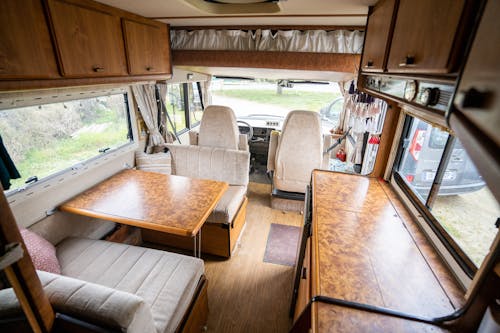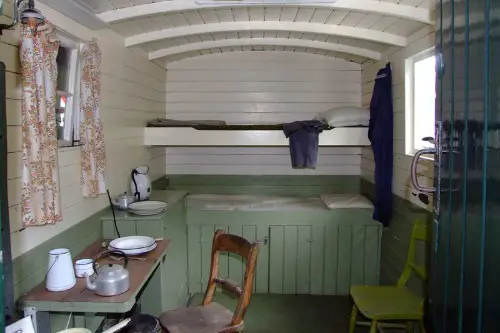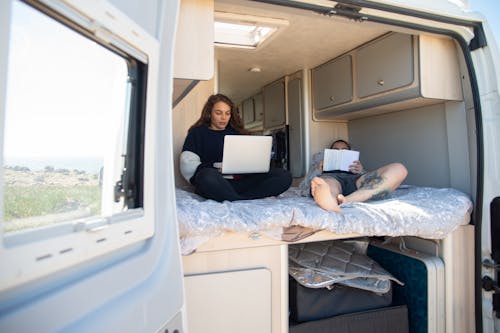1. No Coverage for Custom Upgrades

If you’ve added solar panels, satellite dishes, or custom cabinetry to your RV, your standard policy might not include their value. Many base policies only cover the RV in its original manufactured state. That means if an accident destroys your pricey add-ons, you could get a payout for far less than your investment. The cost difference can be shocking.
Most insurers offer “custom equipment coverage” to fix this, but you have to opt in. It’s especially important if you’ve upgraded for off-grid living or travel comfort. Without it, your payout will only reflect the RV’s stock features. For RV enthusiasts, that’s often a financial gut punch.
2. Using Your RV as a Full-Time Residence

Many RV insurance policies are designed for recreational use, not full-time living. If you move into your RV and don’t update your policy to “full-timer” status, your coverage may not apply to certain claims. This can include things like theft of personal belongings or liability for guests who get injured inside. The insurer could argue you misrepresented how the vehicle is used.
The reason is that full-timers are considered more like homeowners, and that changes the risk profile entirely. They’re parked for longer periods, have more possessions inside, and use the RV systems far more. Some insurers offer “full-timer’s liability” and extended personal property coverage for this reason. Without it, you might find yourself paying out-of-pocket for something you assumed was covered.
3. Excluding Wear and Tear Damage

Standard RV insurance usually won’t cover damage from normal wear and tear. If your roof starts leaking because of age or lack of maintenance, you’ll probably be footing the repair bill. This is true even if that leak ends up damaging the interior. Insurers see this as your responsibility to maintain, not theirs to repair.
The tricky part is that some issues—like sealant deterioration or rust—can happen gradually without you noticing. If damage is traced back to a preventable maintenance problem, the claim can be denied. That’s why routine inspections and keeping records of repairs can make a difference. You’re essentially proving you did your part to prevent avoidable damage.
4. Using the RV for Business Purposes

Driving your RV to trade shows, renting it out, or using it as a mobile office can void your personal-use policy. Most insurers clearly exclude business activities from coverage. This includes liability if someone gets hurt while inside for a work-related reason. Even transporting goods for sale can trigger the exclusion.
The rationale is that business use creates higher risk—more miles, more exposure, and more strangers onboard. Commercial RV insurance exists for this reason, but it’s a separate product. If you mix personal and business use without disclosure, you risk claim denial. It’s not just fine print—it’s a make-or-break detail.
5. Gaps in Vacation Liability Coverage

Vacation liability is meant to cover accidents that happen when your RV is parked and being used like a vacation home. But the coverage often has limits that surprise owners. For example, it may not cover injuries to you or your family—only guests. And it’s sometimes restricted to when you’re in an official campsite, not boondocking on public land.
That means a slip-and-fall during an off-grid trip could be completely out of pocket. Many RVers don’t realize this until after an incident. Reading the location restrictions and coverage definitions is key. Otherwise, you might assume you have broader protection than you do.
6. Limited Roadside Assistance in Remote Areas

Basic RV policies might include roadside assistance, but that doesn’t mean they’ll tow you from anywhere. Many plans cap the towing distance or refuse service in extremely remote locations. If you break down miles from the nearest highway, you could face massive out-of-pocket towing bills. And towing a large RV can easily cost hundreds—or even thousands—of dollars.
Specialty RV roadside assistance programs often offer more generous coverage, including from rural areas or during off-hours. But you have to sign up separately in most cases. If you rely solely on the policy’s built-in assistance, you might be stuck. And with RVs, “stuck” often means stranded far from help.
7. Not Covering Water Damage from Freezing

If you store your RV in cold climates without winterizing it, burst pipes or tanks from freezing are usually not covered. Insurers expect owners to take preventive steps like draining the water system. If they determine negligence, your claim could be denied. The costs to repair water damage can be staggering.
Winterizing isn’t just a suggestion—it’s a coverage safeguard. Keeping maintenance logs and receipts for antifreeze or service work can help in disputes. Otherwise, the insurer has a clear path to say the damage was preventable. And in their eyes, preventable means non-payable.
8. Excluding Certain Natural Disasters

Not all RV insurance includes protection against every kind of natural disaster. Some exclude floods, earthquakes, or hurricanes unless you buy extra coverage. If you travel through disaster-prone areas, that gap can be a serious financial risk. One big storm could mean a total loss without reimbursement.
Insurers do this because certain perils are high-cost and high-frequency in specific regions. Homeowners often face the same exclusions. The fix is to add a “special peril” or disaster rider. Without it, you might be unknowingly gambling with your RV’s fate.
9. Storage Location Restrictions

If your RV is damaged while stored at home, at a friend’s property, or in an unsecured lot, some policies won’t pay out. The fine print can require storage in approved facilities or under certain security conditions. Theft, vandalism, or weather damage could be excluded if you don’t meet them. This catches many owners by surprise.
The reasoning is that improper storage increases risk. Covered storage is often climate-controlled, monitored, and fenced. If you opt for cheaper or more convenient options, the insurer may see it as a choice to accept more risk. That’s when they pass the cost back to you.
10. Claim Denials for Unapproved Drivers

Your RV policy usually lists who’s allowed to drive. If someone outside that list—like a friend or relative—takes the wheel and gets in an accident, coverage can vanish. Some policies require that any driver be explicitly named or at least meet certain criteria. Even if you’re sitting right there, the insurer can still deny the claim.
This is because RVs are larger and harder to handle than regular cars, so insurers limit who they’ll insure as a driver. Letting an unlisted person drive can be seen as increasing risk without consent. Adding occasional drivers to your policy is usually simple and worth the cost. Otherwise, a moment of generosity could turn into a massive expense.
11. Low Personal Belongings Limits

RV insurance often includes coverage for personal belongings, but the limit can be shockingly low—sometimes under $1,000. That barely scratches the surface if you travel with electronics, outdoor gear, or hobby equipment. Loss from theft, fire, or accident could leave you paying the majority yourself. And your homeowners or renters policy might not cover items when they’re in your RV.
To fix this, you can increase the personal property limit or buy supplemental coverage. Doing a quick inventory of your RV’s contents helps determine the right amount. The default limit is often a placeholder, not a realistic reflection of your needs. Without adjusting it, you’re underinsured before you even hit the road.
12. Time Limits on Filing a Claim

Even if you’re fully covered for an incident, missing the claim deadline can leave you with nothing. Some policies give you as little as 48 hours to report theft or vandalism. Others require filing all supporting paperwork within a set number of days. Miss that window, and the insurer can legally deny your claim.
These deadlines exist to help insurers investigate quickly and reduce fraud. But in real life, RV travel often means spotty internet, changing locations, and delays in gathering documents. That’s why knowing your policy’s reporting requirements matters as much as knowing what it covers. Being late, even by a day, could erase your payout entirely.
This post 12 RV Insurance Loopholes That Leave You Uncovered When You Need It Most was first published on Greenhouse Black.
